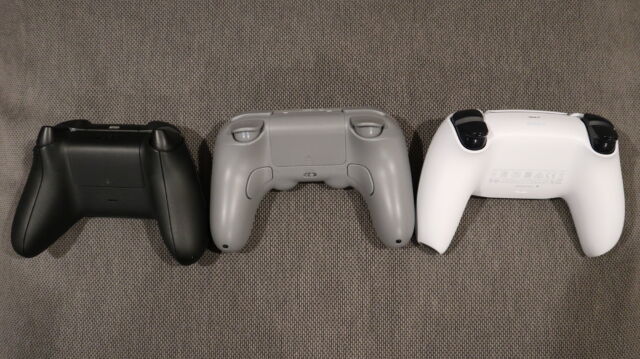
Also, the Start and Select buttons are above the Retrobit logo which differs from the classic controller.

The A and B buttons are staggered the A button is slightly above the B button.

There are a couple of differences you’ll notice right off the bat. I recently picked up a NES controller by Retrobit for around $10 and it works great. Usually somewhere between $5 – $10 can get you one that will work great. The great thing about more and more people getting into retro systems is that there are now a plethora of new controllers available to buy for very cheap. Some new silicone parts will be needed, but other than that things are in working order. The A button doesn’t always respond which isn’t good. Once everything was back together the controller works fine. I don’t mind the yellowing so I’ll probably leave it at that. I tried out the retro-bright sun trick for a few hours and the color is definitely a few shades lighter. The front and back went in the sink with some soapy water for an hour followed by some scrubbing with an old tooth brush. It was a little touch to take apart due to some rusty screws and the cord took about 5 minutes with a damp cloth before it was clean. I picked up an original Nintendo controller that was in rough shape, but on the upside it was super cheap. Usually the game ROM will handle this by maybe making a character on the screen jump, fire an arm cannon, etc.įor more information Tresi Arvizo wrote a great explanation on the NES controller here. The NES now knows the state of the controller and will then further process that state. The clock line is pulsed until each of the eight bits is read via the latch line. The NES then sends a pulse on the Clock line causing the shift register to shift the bits over by one. The shift register than captures the state of the input lines and places them on the Data line (in a sort of buffer). Getting back to how the controller works, once a button is pushed the data is sent to the shift register which ignores it until the NES sends a pulse on the Latch line. This is a great video and worth the time. While attempting my multi-meter science experiment, I came across this great video by David Nunez about how the NES controller works. It all adds up to digital electronics, and that’s cool! Sequential logic is where the output doesn’t depend on the current input, but depends on what has happened to past inputs as well as the current input. A flip flop is a circuit that has two stable states.įlip flops are the basic element in sequential logic. The output of one if the input for another (if I understand this correctly). In my original NES controller the shift register is a BU4021B by Mouser.Ī shift register is a bunch of flip flops connected together. Each controller had the D-pad and A and B buttons though. Controller 2 came with a volume control and microphone. Only controller 1 on the Famicom and a Start and Select button. Maybe it’s simply taken more seriously… at least in the mid 80s. My thought is that in Japan playing video games is different. The thinking is that living rooms are a lot smaller in Japan then the U.S., but doesn’t seem like they’d be that much smaller. The controllers for the Japanese Famicom, which came out before the NES, were hard wired into console itself. Must be nice to have that kind of job security! That’s some pretty good controller wizardry.Īccording to LinkedIn he’s a/the Design & Brand Director at Nintendo of America. He is also behind the design of the Wiimote. Lance Barr is credited with designing the grey and black NES controller.


Not sure if I ever had a real Game & Watch, but we did have a couple Tiger Handheld games that were similar. If you’re not familiar with the Game & Watch devices, they are small handheld games with a small LCD screen. According to the historical record, the D-pad was first introduced with the Game and Watch version of Donkey Kong.


 0 kommentar(er)
0 kommentar(er)
